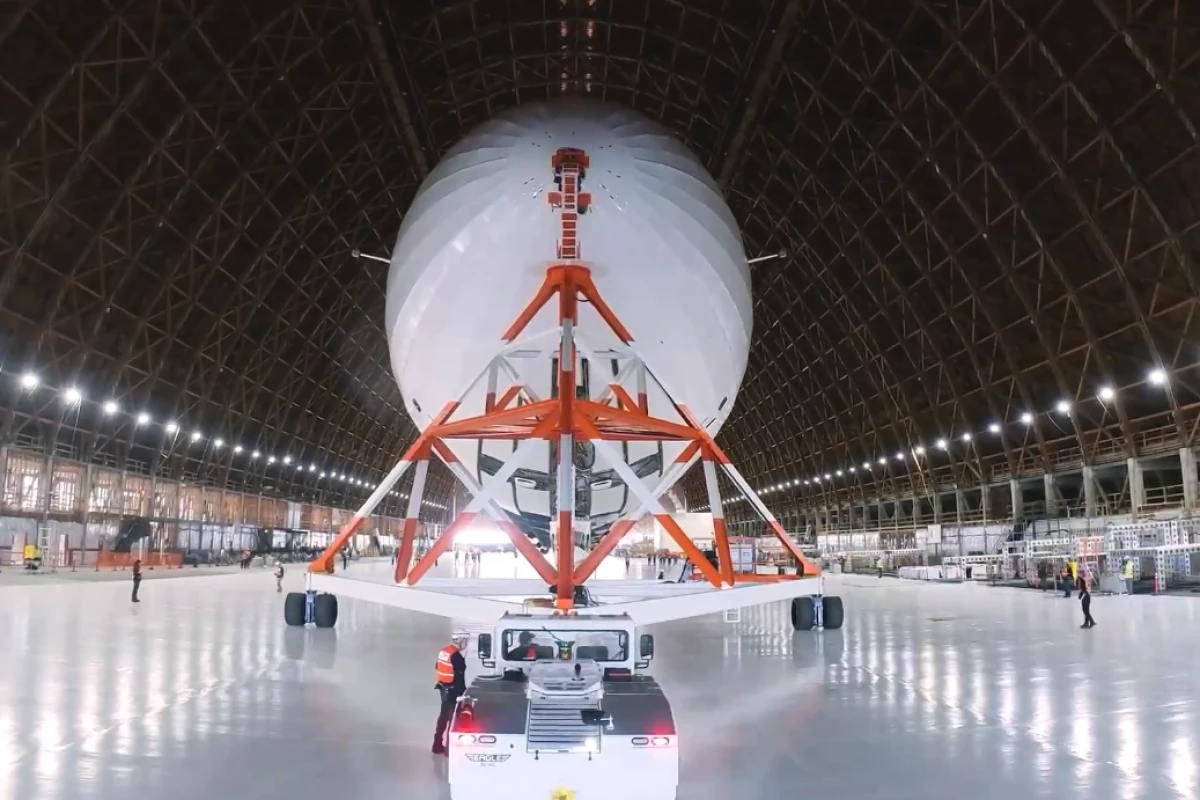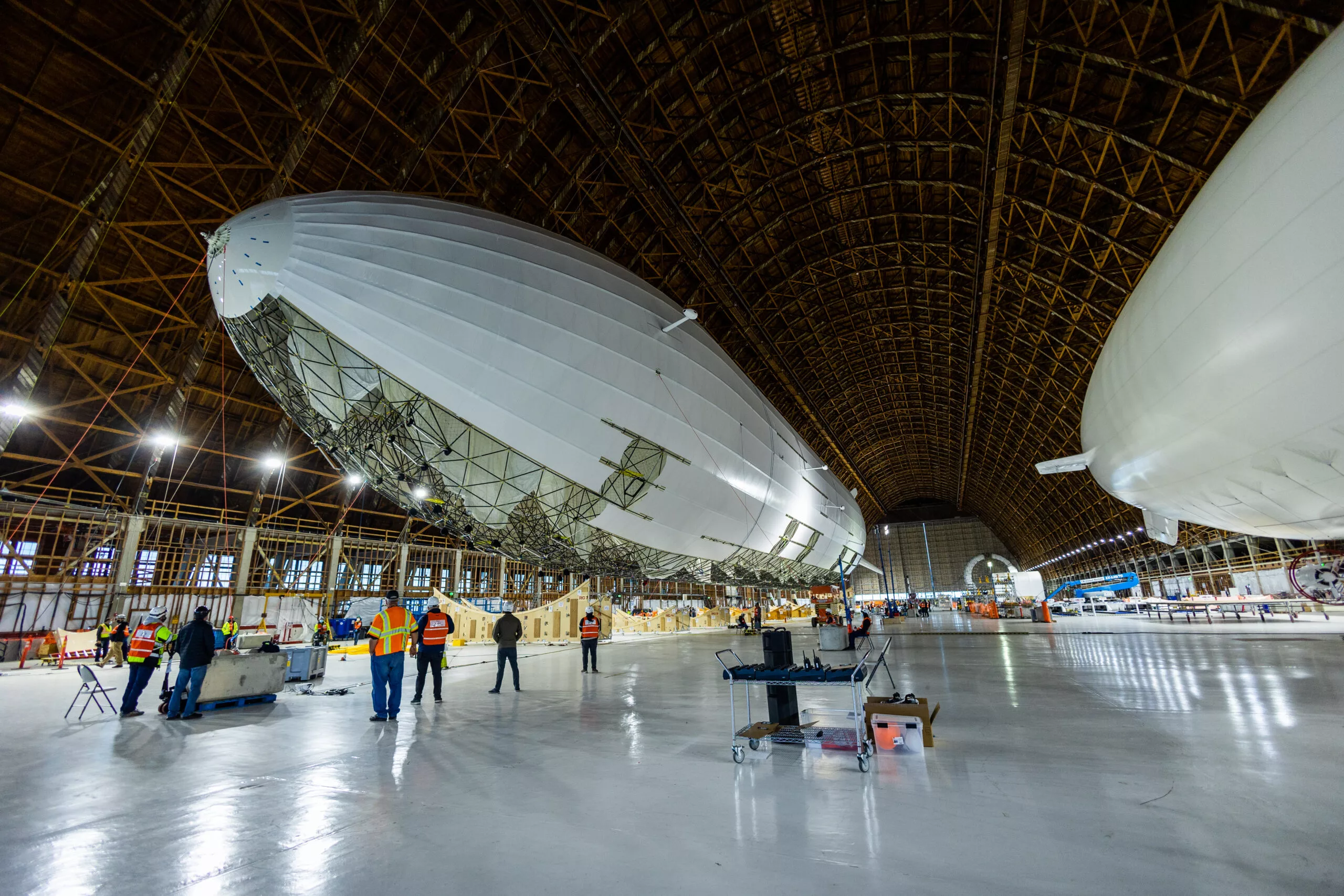Google co-founder Sergey Brin quietly founded LTA Research in 2015, and its massive Pathfinder 1 rigid airship prototype is preparing for its first outdoor flights, with a view to speeding up disaster response and starting zero-infrastructure cargo flights.
At 407 ft (124 m) long and 66 ft (20 m) in diameter, it's considerably longer than the "flying buttocks" of the Airlander 10, although less than half of its width. Still, LTA says it's currently the world's largest aircraft, and it must be absolutely staggering in person, approaching twice the length of an Airbus A380.
While the concept of rigid airships and the basic airframe design are a throwback to pre-Hindenburg times of the early 1900s, Pathfinder 1 uses a frame made from 3,000 welded titanium hubs, joined by some 10,000 carbon fiber-reinforced polymer tubes. These materials advances keep it light enough to fly using helium, rather than hydrogen as a lift gas.

Its outer skin is made from laminated, non-flammable Tedlar material, and it's lifted by 13 ripstop nylon bags full of helium, coated in urethane. Twelve comically small-looking electric propellers poke out from the sides and rear, each capable of rotating from -180 degrees to +180 degrees for effective directional control. These are all managed through simple joystick controls, through a fly-by-wire flight control system.
While propulsion is electric, and there's a fairly substantial battery pack on board, the prototype also runs a pair of 150-kW diesel generators – although the plan is eventually to replace these with hydrogen fuel cells. Top speed is estimated at a fairly lugubrious 75 mph (120 km/h), and the Zeppelin-designed gondola cabin beneath could carry up to 14 people. LTA estimates its cargo capacity at between 4,400 - 11,000 lb (2,000-5,000 kg).
Currently housed in a monstrous hangar in Mountain View, California, Pathfinder 1 has already flown indoors earlier this year. According to IEEE Spectrum, the company has now been awarded the special airworthiness certificate required to fly this beast outdoors – at less than 1,500 ft (460 m) of altitude, and within the boundaries of Moffett Field and the neighboring Palo Alto Airport's airspace.
Pathfinder 1, though, is merely a proof of concept, writes IEEE's Mark Harris, with a much larger, 591-ft (180-m) production-focused Pathfinder 3 already under development. Indeed, the company has taken over the massive Airdock in Akron, Ohio, a hangar big enough to house a 984-ft (300 m) airship – even bigger than the gargantuan 804 x 135-ft (245 x 41-m) Hindenburg-class airships of the 1930s, which remain to this day the largest aircraft ever built.

LTA says its chief focus is humanitarian aid; airships can get bulk cargo in and people out of disaster areas when roads and airstrips are destroyed and there's no way for other large aircraft to get in and out. Secondary opportunities include slow point-to-point cargo operations, although the airships will be grounded if the weather doesn't co-operate.
It's gonna be a helluva sight to see these enormous, grand machines back in the sky. Certainly, there are a number of programs at the moment working to get airships back into circulation. California readers, drop us a line and a picture if you see the Pathfinder in person!
Source: LTA Research via IEEE Spectrum







